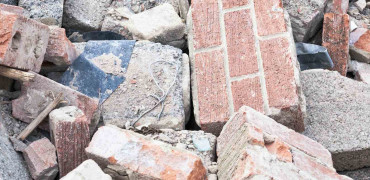Recent studies by the World Health Organisation show that the overwhelming majority of the global population breathe air that exceeds WHO guidelines for safety.
This air contains high levels of pollutants and is linked to over 5.5 million premature deaths a year.
Air quality is linked closely with our climate. Many air pollutants are also sources of greenhouse gases and therefore to improve our air quality is also to improve our climate and health.
Many of these pollutants get trapped in our densely populated urban areas and everyday we breathe them in and out, in and out……
So is now the time to introduce Green Infrastructure as a way to mitigate some of these toxic fumes?
Green roofs, green walls, parks, terraces, all add health and financial value
Diverse and cleansing
The scientific term for the capture of toxins and gases by plants in this way is biogenic regulation. In the most basic terms, the plants clean the air we breathe.
By 2050 it has been predicted that London’s temperature will have reached a similar level to that of southern France. Many of our UK cities were not designed for such heat.
Introducing plants can help because they lower temperatures through evapotranspiration.
In addition, the scale of green infrastructure that we decide to introduce into our cities and towns will be directly proportional to the improvement of our air.
Living walls not only clean our air but also increase the biodiversity of our spaces.
They offer often scarce nesting opportunities and provide a habitat for bees, butterflies, birds and insects, creating a well-balanced and necessary ecosystem.
The calming effect of nature
Humans also share a bond with nature known as biophilia.
Nature is pleasing to look at. It calms our stresses, improves our mental wellbeing. It uplifts us in a restorative way.
By introducing nature into our cities and concrete areas we connect with the natural planet. Our responsibility to our world becomes more apparent and its value is there to observe.
When our bond with nature is completely severed as in many parts of our cities, our psychological wellbeing can be affected, which in turn has a direct impact on our physical health.
Where space is at a premium, living walls offer the perfect solution.
The price of nature
As we know, generally urban property increases in value the more space it sits in.
But did you also know that its value increases the closer it is situated to a green area?
Surprisingly hotel rooms that overlook a living wall command significantly higher rates than those overlooking another building or car park.
Green building will be essential for our future.
Planting helps to cool down our cities and blocks the ‘urban heat island effect’. Green coverings also provide shade. Indoor temperatures can be reduced.
A green roof can help maintain a stable temperature in the hot sun, a cement-built one gets hotter and hotter, sometimes reaching 50 degrees centigrade!.
A natural sponge
Greenery is not only a benefit in the heat but also in the rain!
A green roof or living wall helps to improve drainage. Plants and shrubs soak up rainwater and delay the build-up of excess water that can lead to damaging floods.
With climate extremes being reported globally on a daily basis, it will be essential to bring nature into our cities in a more comprehensive way, not just in the form of parks and trees but also on and around our buildings.
Green roofs, green walls, parks, terraces, all add value. This is not just financial but also with regards to overall health.
Simply by planting we can remove air pollutants, reduce urban temperatures, cool our buildings, improve biodiversity, reduce noise, improve wellbeing, and benefit our health.
All that considered, why haven’t we done this already?
Kirsty Hammond Editor of Specifier Review



